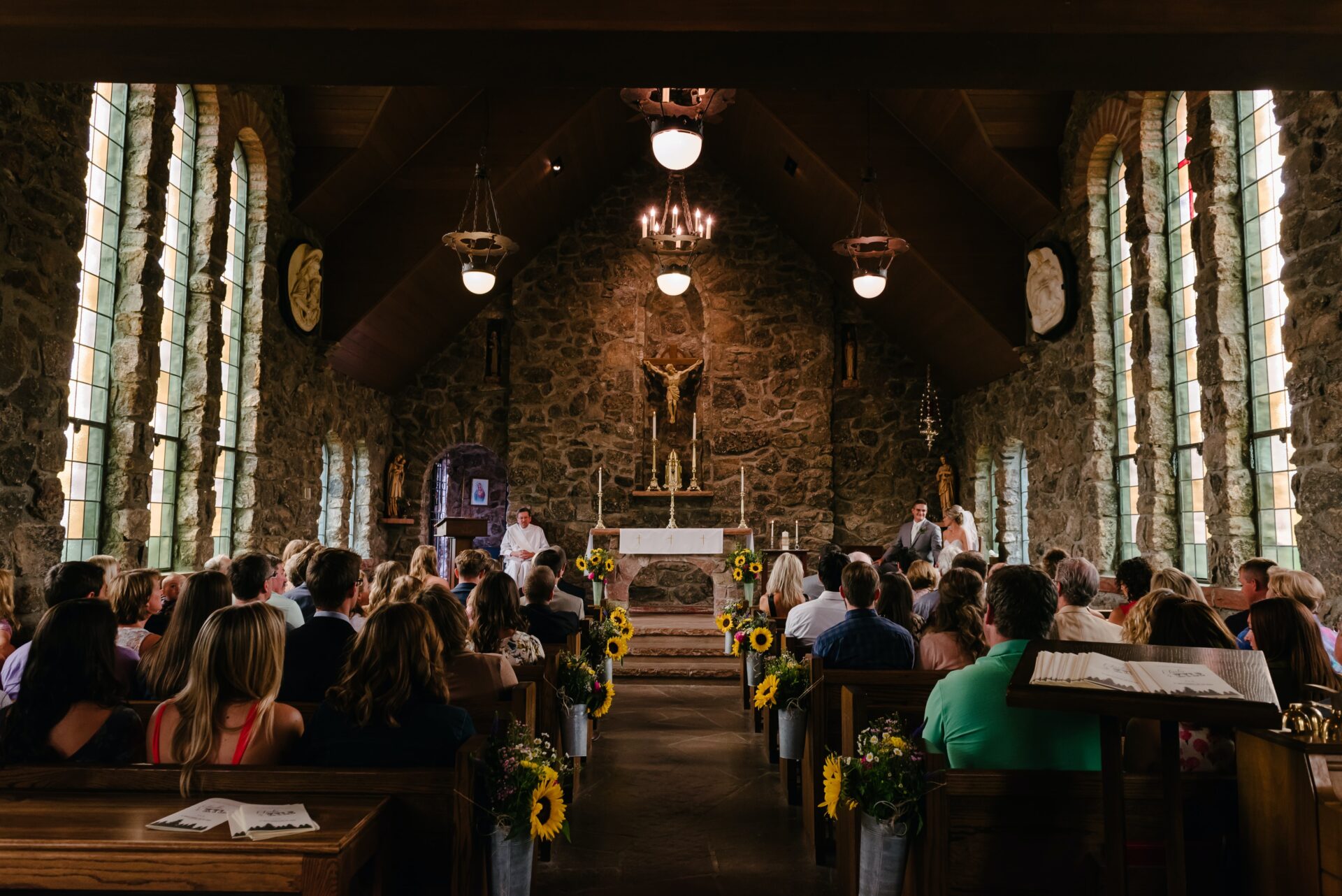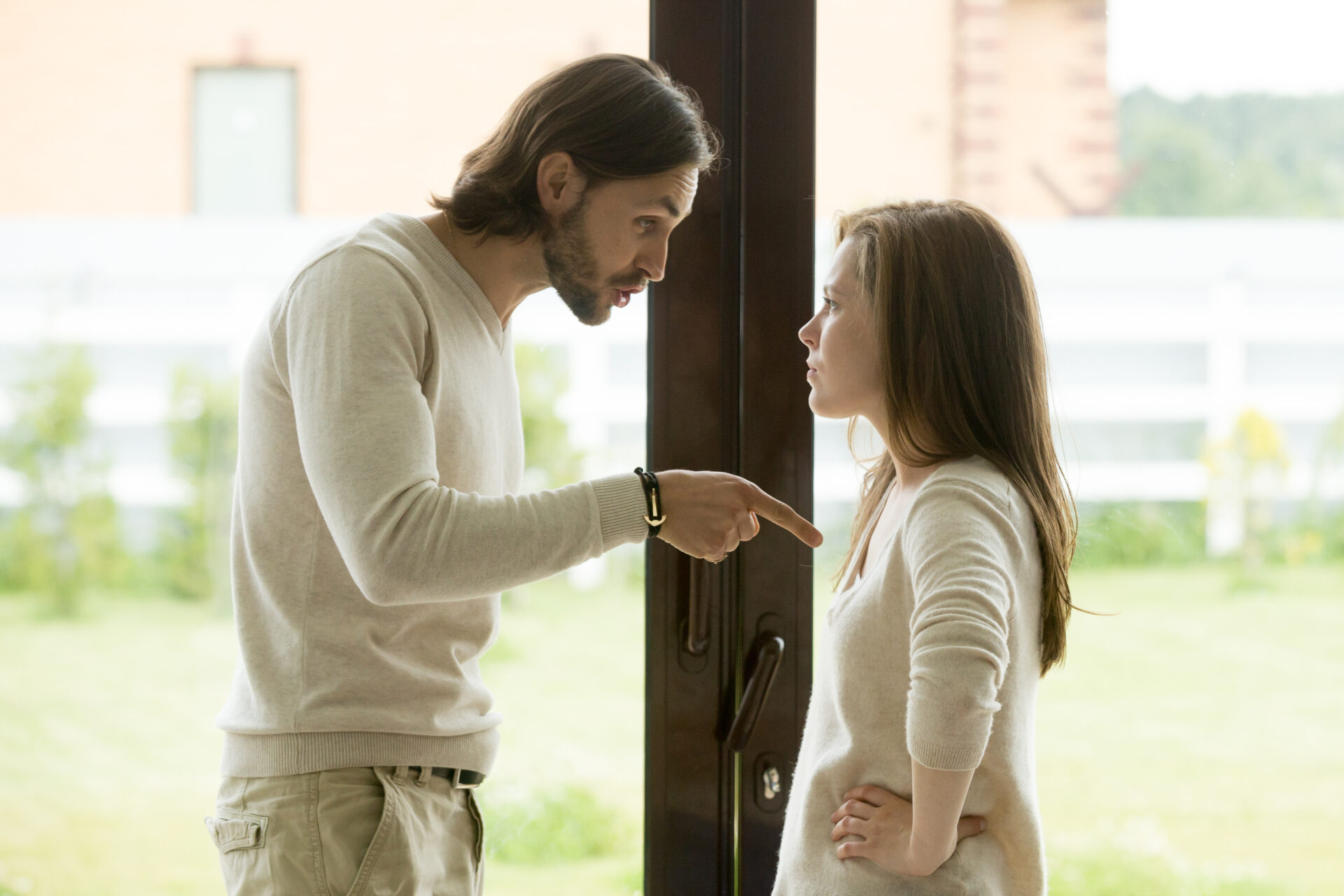May you have true friends to stand by you,
both in joy and in sorrow.
—Rite of Marriage, (1) no. 37
Many Catholics in the United States hear this simple but powerful prayer at the conclusion of a Catholic wedding ceremony. As part of the final blessing bestowed upon the couple, it captures well the Church’s fervent prayer for both husband and wife as they begin their new life together. It expresses the hope of the entire Christian community that care, concern, and support will be present to them during their most joyful and most sorrowful times.
Newly married couples begin life together in anticipation that their marriages will last. What they desire deeply within their hearts on their wedding day conforms to God’s deepest desire for them. If a marital relationship subsequently ruptures—for any one of myriad reasons, and despite all attempts to remedy their situation—couples can find themselves in very uncertain and sometimes fearful circumstances. (2)
The Catholic Church’s teaching and discipline regarding divorce are rooted in the words of Jesus (see Mt 19:3-9, Mk 10:2-12, and Lk 16:18). This teaching affirms that God’s plan for marriage—from the very dawn of Creation (see Gn 1:28 and 2:18-24)—is a partnership of mutual and lasting fidelity.(3) Marriage is an irrevocable covenant brought about by the consent of the spouses, by which they agree to give and accept themselves completely through life’s inevitable challenges and celebrations. Accordingly, “between the baptized, ‘a ratified and consummated marriage
cannot be dissolved through any human power or for any reason other than death.’”(4) Because of the enduring sinfulness of the human condition, the Church recognizes that a separation of the spouses can later occur—often for grave and unfortunate reasons—with the original marriage bond remaining. (5)
The above epigraph from the Rite of Marriage reflects St. Paul’s Letter to the Romans, wherein he exhorts the Christian community to “rejoice with those who rejoice, weep with those who weep” (Rom 12:15). It follows Paul’s moving reflection on the body of Christ and the role that each part of the body exercises in supporting the others in loving communion. Persons who experience marital discord will naturally turn to the comfort of family and friends for initial support. As a family of faith, moreover, the entire Christian community—made present to the couple on their wedding day—is exhorted to accompany those who suffer from an irremediable marriage situation. Pope John Paul II was an especially strong proponent of the Church’s responsibility in this regard. Referring to persons who are separated or divorced but not remarried civilly, he stated that
The ecclesial community must support such people more than ever. It must give them much respect, solidarity, understanding and practical help, so that they can preserve their fidelity even in their difficult situation; and it must help them to cultivate the need to forgive which is inherent in Christian love, and to be ready perhaps to return to their former married life. (6)
Parishioners and parish leaders might well ask themselves: How are separated and divorced persons treated in this parish? What is the parishioners’ prevalent attitude toward persons who are separated or civilly divorced? Pope John Paul II characterized the fundamental Christian attitude that ought to permeate a parish’s response: “let these men and women know that the Church loves them. . . . it is necessary to welcome them with charity and kindness.” (7) In his first encyclical, devoted to the meaning and exercise of Christian charity, Pope Benedict XVI further reflected on the ecclesial exercise of charity: “as a community, the Church must practice love. Love thus needs to be organized if it is to be an ordered service to the community.” (8)
Putting Faith in Practice
In 2005, to inaugurate its National Pastoral Initiative on Marriage, the United States Conference of Catholic Bishops invited dioceses to conduct focus groups with married Catholics, including spouses who are separated or divorced. The focus groups presented recommendations for pastoral outreach to those in this situation. “Many spoke of the need for resources (lists of counselors, reading materials, websites) that could be posted on a parish and/or diocesan website. . . . [for] parish-based support groups. . . . [and for] programs for divorce care . . . that reinforce Catholic teaching.” Other participants recommended that “parishes sponsor activities that are not always family-centered.”(9)
Pastoral practices aimed at persons who are separated or divorced are best complemented by catechetical initiatives to form the entire parish community in becoming welcoming and encouraging examples of Christian evangelization. (10) Such initiatives can provide needed clarity in explaining truthfully the Church’s teachings related to marriage and reconciliation and offer the needed correctives for today’s misconceptions. Through such initiatives, brokenness can be healed, self-worth can be affirmed, and isolation can be overcome. Thus welcomed into the Body of Christ, the separated and divorced are able to draw closer to the Lord, discover the rich mercy of his promise of forgiveness, and remain ever confident of the Lord’s commitment to shoulder their burdens along with them (see Mt 11:30).
Some separated and divorced Catholics express the mistaken notion that their situation objectively sets them outside the Catholic community. This could not be further from the truth. It is essential that divorced Catholics know that they are not excommunicated under church law and that their right and responsibility to participate in the life of the Church—which they possess by virtue of Baptism—does not cease with the breakup of their marital union.(11) In fact, participation in the life of the Church is essential for continued growth in the faith.
It is true that Catholics who are divorced and civilly remarried present a unique challenge for the Church’s ministry. In fidelity to the teaching of Christ and the prescriptions of canon law, the civil union is invalid. Couples in these situations therefore “find themselves in a situation that objectively contravenes God’s law.”(12) They may not receive the Eucharist or exercise other official functions within the Church until their sinful situation is resolved. Divorced and civilly remarried Catholics can and should remain active in many other ways, however, such as reflecting on the Word of God, attending Mass, fostering works of charity and justice, cultivating a spirit and practice of penance, and continuing to guide their children in the Catholic faith. (13)
Daily parish life offers pivotal moments for ongoing catechesis on the Church’s teachings related to marriage and reconciliation. Adult faith formation programs, retreats, homilies, missions, and formation for newly married couples are suitable occasions to address marital difficulties as they arise. Because the pain and rupture of separation and divorce extend to other family members, children of separated and divorced Catholics should hold a special place within the Church’s healing and catechetical ministries. Some divorced Catholics have expressed concern that their children’s legitimacy will be affected by a subsequent declaration of nullity by a church court. These persons ought to be assured, however, that the children’s legitimacy is not affected by such declarations.(14) National and international programs developed specifically for separated and divorced persons can be adapted with great effect to attend to families’ emotional needs and support parents in fulfilling their natural and ecclesiastical obligations toward their children.
A Future Filled with Hope
The Church’s diverse response to Catholics who are separated or divorced is always faithful to Christ’s teaching on the indissolubility of marriage and the Church’s vigilance concerning scandal. Parish staffs, in collaboration with diocesan personnel, should work closely with Catholics who find themselves in these situations to explore the various options that are available for remedying their situations. In some instances, it will be helpful to discuss with a church tribunal official the possibility of petitioning for a declaration of matrimonial nullity. (15) Pastors and priests will also want to work closely with spouses who were believed to have been instrumental in the breakup of their marriage for proper conscience formation and signs of repentance. (16)
The gospel message makes evident the truths that sin and suffering will continue to exist, even within marriages of well-intentioned Catholics, and that God’s everlasting love is revealed in the Lord’s unending promise of forgivenessvand the hope of a new beginning. Christian hope “affords us joy even under trial,” (17) permitting us to proclaim with the words of St. Paul, “Rejoice in hope, endure in affliction” (Rom 12:12).
This material was originally developed as a resource for Catechetical Sunday 2010.
Notes
- See Rite of Marriage, in The Rites of the Catholic Church, study ed. (New York: Pueblo Publishing Company, 1990).
- A 2007 Center for Applied Research in the Apostolate (CARA) study commissioned by the Committee on Marriage and Family Life of the United States Conference of Catholic Bishops (USCCB) reported that 13 percent of adult Catholics in the United States are currently separated or divorced, a statistic
that mirrors the incidence of divorce among the population
of the United States generally. See CARA, Marriage in the Catholic Church: A Survey of U.S. Catholics, October 2007, www.usccb.org/laity/marriage/marriage_report.pdf.
- See Catechism of the Catholic Church (CCC), 2nd ed. (Washington,
DC: Libreria Editrice Vaticana–USCCB, 2000), nos. 1603-1605, 1614.
- CCC, no. 2382, quoting Code of Canon Law: Latin-English Edition: New English Translation (CIC) (Washington, DC: Canon Law Society of America, 1998), c. 1141.
- See CIC, cc. 1152-1153.
- Pope John Paul II, Apostolic Exhortation On the Family (Familiaris Consortio) (Washington, DC: USCCB, 1982), no. 83.
- Pope John Paul II, Address to the Pontifical Council for the Family (January 24, 1997), nos. 2 and 4, www.vatican.va.
- Pope Benedict XVI, Encyclical God Is Love (Deus Caritas Est) (Washington, DC: USCCB, 2006), no. 20.
- For the complete focus group report, see www.usccb.org/laity/marriage/separated.shtml.
- See USCCB, National Directory for Catechesis (Washington, DC: USCCB, 2005), no. 36.C.2.
- See CCC, no. 1651.
- Congregation for the Doctrine of the Faith, Letter to the Bishops of the Catholic Church Concerning the Reception
of Holy Communion by the Divorced and Remarried Members of the Faithful (Annus Internationalis Familiae) (September 14, 1994), no. 4, www.vatican.va/roman_curia/congregations/cfaith/documents/rc_con_cfaith_doc_14091994_rec-holy-comm-by-divorced_en.html. See also Pontifical Council for Legislative Texts, Declaration “Concerning the Admission to Holy Communion of Faithful Who Are Divorced and Remarried” (June 24, 2000), www.vatican.va/roman_curia/pontifical_councils/intrptxt/documents/rc_pc_intrptxt_doc_
20000706_declaration_en.html.
- Pope John Paul II, Familiaris Consortio, no. 84; see also CCC, no. 1651, and Pope Benedict XVI, Post-Synodal Apostolic Exhortation The Sacrament of Charity (Sacramentum Caritatis) (Washington, DC: USCCB, 2007), no. 29.
- See CIC, c. 1137.
- See USCCB, United States Catholic Catechism for Adults (Washington, DC: USCCB, 2006), 288-289.
- CCC, no. 2386.
- CCC, no. 1820.
About the document
The document Divorce and the Church’s Healing Ministry was developed as a resource by the Committee on Evangelization and Catechesis of the United States Conference of Catholic Bishops (USCCB). It was reviewed by the committee chairman, Bishop Richard J. Malone, and has been authorized for publication by the undersigned.
Msgr. David J. Malloy, STD
General Secretary, USCCB
Save








